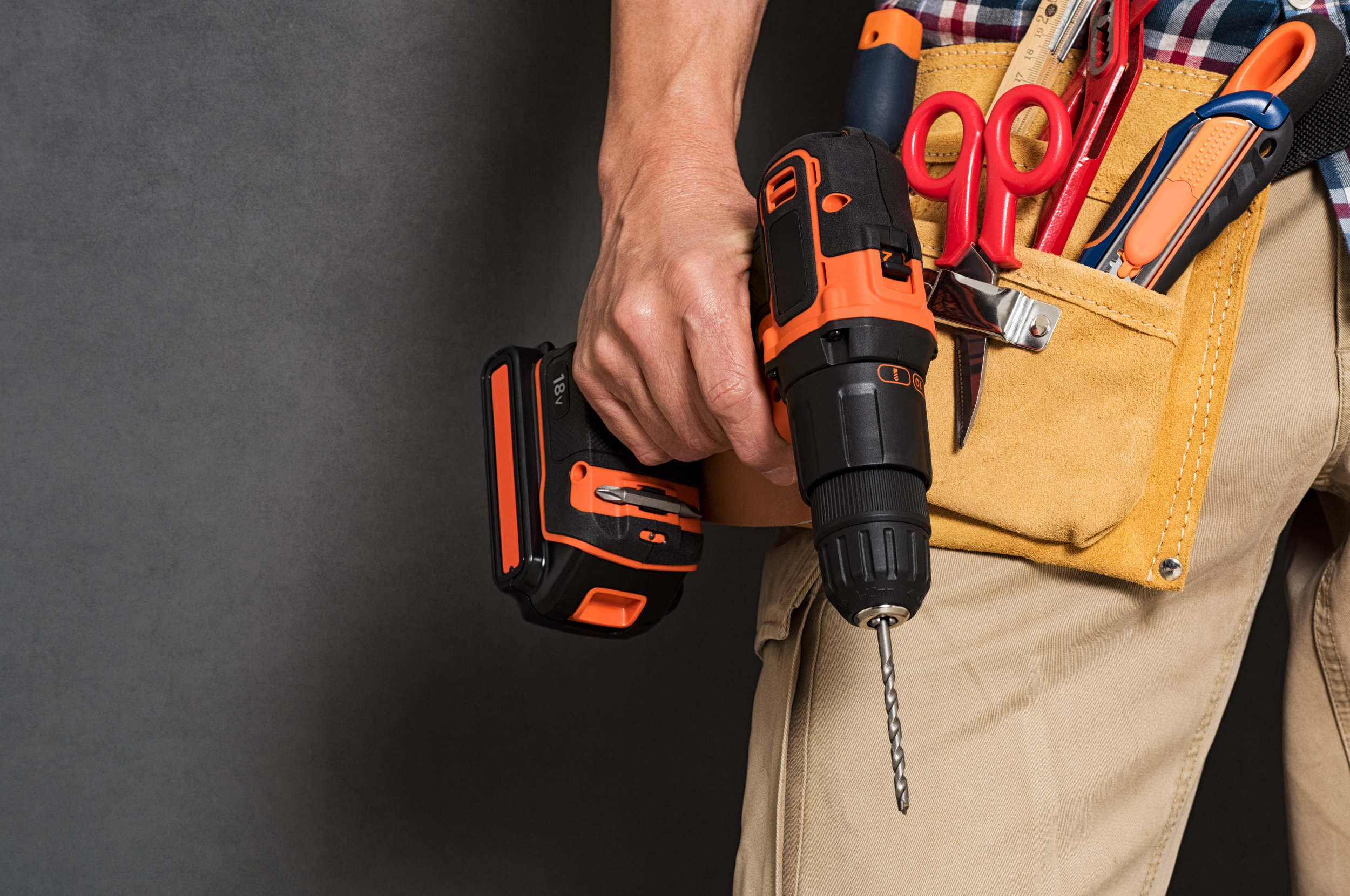When up on scaffolding, having the right tool on hand to use efficiently—and safely—is important. Before getting up there, you should determine what tool is appropriate for the job you’re doing, so it is ready to go, and you aren’t bogged down with too many things under foot or on your belt.
For drilling and setting screws, it is important to know the differences between working with a traditional cordless drill and an impact driver, and the pros and cons of each. Both are easy to use and mobile enough to hook on your belt (with the versatile Gorilla Hook) and take up the ladder with you, but which is appropriate for the job you’re doing?
What’s the difference?
The most basic difference is in pressure and strength. A drill applies steady, constant pressure until it runs out of power (or the clutch is engaged), offering less power than the impact driver, but sustaining its pressure. An impact driver has a hammering pressure that repeatedly strikes, using greater force but in quick bursts.
An Impact Driver for Torque
The impact driver excels in working with tough materials, powering in screws with rapid blows, driving them faster and easier than a drill. It can drive longer, large fasteners easier as well, with brute strength, driving screws with two or three times more torque than most drills. The impact driver is ideal for doing many screws in a row, screwing large screws or thick fasteners, and driving into dense material, such as laying down a sub floor or deck. Overall, it is less likely to stall out or strip your screws when dealing with materials that require more effort. This also can relieve some of the pressure from your arm, as the impact driver takes the force of the dense materials, rather than causing arm or wrist fatigue that can happen when trying to screw into a dense surface repeatedly.
RELATED: WHY YOU SHOULD UPDATE YOUR OLD DRILL HOLSTER TO A CLASPLESS DRILL HOLSTER TODAY
A Cordless Drill for Precision
A cordless drill has more versatility and precision; it’s designed to both drill holes and drive screws, and accepts numerous kinds of bits for a wider variety of jobs. The clutch allows for adjusting the torque for exact drilling. While the impact drill is technically capable of drilling holes with a variety of bits, it is rougher and doesn’t have the smooth function that produces clean holes as smoothly as the way a drill does. A drill is ideal when you are switching back and forth between drilling holes and screwing, working with less dense materials such as soft woods and drywall, and for jobs that require more care and precision, particularly at the finishing stages.
Even More Efficiency
Once you’ve determined the best tool to take up with you, consider how else you can make working on the scaffolding easier on yourself. Proper tool belt organization and devices like the Gorilla Hook will make sure you can reach for the tool you need quickly and efficiently. The Gorilla hook clips securely onto your belt, and has an easy, one-handed, self-closing latch that is ideal for safety when you’re working at a height.
RELATED: CORDLESS DRILL STORAGE TIPS
Whatever your project, making sure you have the correct tool for the work and a safe and organized workspace to ensure an easier process and a better finished product.


